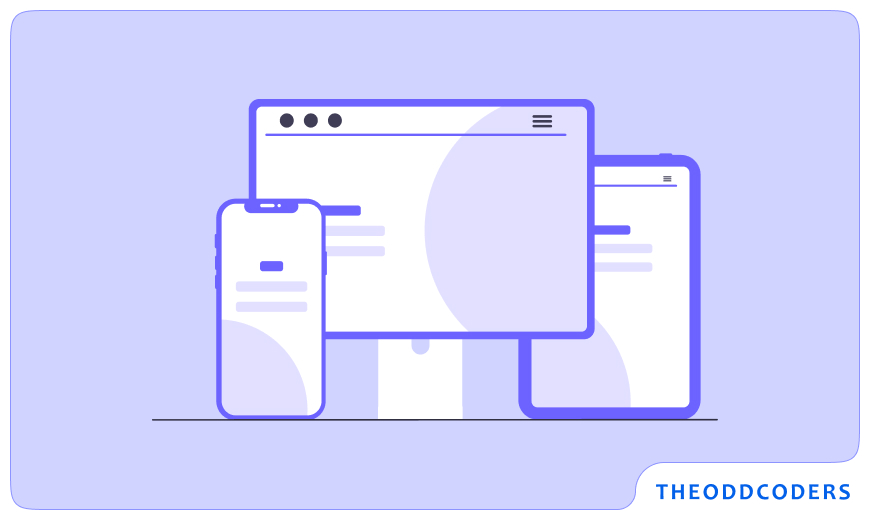
In today’s modern digitalized world of web, responsive web design has become crucial for the survival of a company. Businesses that do not have a professionally built website may lose potential customers. A professional website development company in India can help in creating responsive web design.
What is Responsive Web Design?
Responsive design is simply the creation of web pages that are designed to detect the visitor’s screen size, platform, and alignment. Based on these factors, these pages change the layout accordingly. It is a method of web page creation that makes use of:
- Flexible grids and layouts
- Flexible images
- Cascading Style Sheets (CSS) media queries
Responsive design is an approach to website design that resolves several design issues triggered by the rise of new types of mobile devices. With this approach, when a user switches from one device to another like from a laptop to an iPad, the website should act accordingly. It means that it will automatically switch to accommodate resolution, image size, and scripting abilities.
In today’s time, the majority of website visitors are users of mobile devices. This is the reason why a responsive website is quickly becoming a status quo for every website. Even in 2015, Google introduced Mobilegeddon which started to increase the page ranking of mobile-friendly websites.
Companies with a website that don’t accommodate mobile users are finding it difficult to survive in today’s highly competitive marketplace. To reach potential customers, businesses must invest in creating a responsive web design. Before looking at the benefits of responsive website design and reasons to choose a professional responsive website design company, let’s know about the history of responsive web design in brief.
A Brief History of Responsive Website Design
The website “Audi.com” was the first ever website that was designed to adjust its layout based on the width of the browser viewport. It was launched in 2001. At that time, various terms like liquid, elastic, flexible, and fluid were used interchangeably to describe the concept of a responsive website. However, in May 2010, Ethan Marcotte created the phrase “Responsive Web Design”. Later in 2011, Marcotte wrote a book on the subject to describe Responsive Web Design (RWD) in detail.
The reason behind the rising demand for RWD is mainly the growing number of mobile users. In addition, it was not a feasible option to carry laptops everywhere.
In the starting, when mobile devices were first able to access web pages, it was not easy to navigate the websites on mobile devices. Mobile users had to put a lot of effort to navigate websites, especially those optimized for large screens. With such websites, users had to pinch, zoom, and scroll the website every now and then when they need to do something. Besides, they had to wait longer for web pages to load. On top of that, the worst thing was they sometimes end up pressing the wrong button by mistake. And to correct this mistake, they had to go back to the previous page and wait again for the page to load. Looking at all these things, it is clear that web browsing through mobile was not at all a smooth thing at that time. The only way to resolve this issue was to create a responsive web design.
Soon, many companies started realizing the importance of optimizing websites for various devices. Gradually, they started using technology that automatically responds to the user’s preferences. As a result, it became easier for users to use websites on their mobile devices.
Benefits of Responsive Website Design for Businesses
Now let’s jump into the benefits of responsive web design for today’s businesses.
- Higher Search Engine Rankings: Responsive web designs help websites get higher search engine rankings. Yes, in 2018 Google confirmed that it gives preference to websites that follow best practices for mobile-first indexing. Mobile-first indexing means that Google primarily uses the mobile version of a page’s content for indexing and ranking purpose. From July 2019, mobile-first indexing is enabled by default for all new websites that are new to the web or formerly unknown to Google Search. So, if you have a design for mobile users, the chances of getting higher search engine rankings will increase.
- Higher Ranking Brings in More Traffic: Higher search engine ranking plays an important role in the success of a website. Every company whether it’s an e-commerce or a corporate website tries to offer valuable content that’s useful for the users. However, if their information is not available on the first few pages of Google, there are higher chances that it’ll go unnoticed. About 20% of people prefer clicking on top search results on Google. Whereas 16% of users click on the second result and 11% on the third result. Since responsive websites get more preference from Google, the chances of getting more traffic also increase.
- Reach More Customers: Responsive designs help in better ranking and bringing more traffic, consequently, helping you reach more consumers. Even if responsive web design is not getting you a higher search engine ranking, it is still a good idea to invest in these web designs. Why? Well, in today’s time a large percentage of people are using smartphones for shopping purposes. They can easily find almost everything they want on their smartphones. By adopting a responsive web design, you can reach out to more potential customers.
- Improved Sales and Conversion Rates: Another key benefit of responsive design is increased sales and conversion rates. With responsive design, you can deliver an exceptional site experience to your visitors. The implementation of Cascading Style Sheets (CSS) across devices along with unified design creates a smooth and consistent look and feel. When uses will have a consistent experience, it will automatically create a positive impact on your conversion rates. In all, the functionality, performance, and consistency offered by responsive web designs have the power to improve your sales and conversion rates.
- Time and Cost Saving: Responsive web design prevents the need of developing a separate site for the web and mobile. You will just need to invest in a single website design to reach all your potential customers no matter what device they use. It takes very little time to create a responsive design as compared to creating an additional mobile website. Moreover, testing across different websites leads to higher development, support, and maintenance costs. Therefore, it is much easier, less time-consuming, as well as cost-effective to manage and maintain a single website.
So, these are a few key benefits of choosing a responsive design for your website. Apparently, the growing usage of the internet and the rise of web applications on various mobile devices has been the driving force behind this development. By investing in this kind of website design, you will surely experience positive results for your business.
Conclusion:
If you want to implement responsive web design for your new website or existing one, you must take the help of professionals. A professional responsive website design company like Theoddcoders Technologies can help you in creating the best website that meets the demands of mobile devices. They are well aware of the latest designs and tools on the market. With their knowledge and expertise in responsive web design, the professionals at Theoddcoders Technologies can guide you towards the right path to success. For any query or demo, feel free to connect with the Theoddcoders Technologies team.
Have a project you want to start?
Ask for a free quote now!
Author
Yatindra Lohar
Yatindra Lohar is a dynamic professional with a decade of experience in the digital marketing industry. His expertise spans web design, mobile app development, and custom software development, reflecting his versatile skill set. His passion for technology and innovation drives him to stay at the forefront of industry trends, making him a valuable asset to any team or project.



